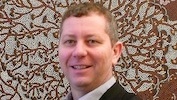Tomaso Aste
Head, Financial Computing & Analytics Group
Director, MSc Financial Risk Management
Biography
I obtained a degree in Physics from the University of Genoa in 1990; in 1994 I was then awarded a PhD in Material Sciences from the Politecnico di Milano (second year at Imperial College, London). After two Post-Docs at the University of Strasbourg (’94-‘98) and at the University of Genoa (’98-‘01), in 2002 I obtained a permanent position in the Department of Applied Mathematics, at The Australian National University (Canberra, Australia), where in 2006, I was promoted Associate Professor. In 2009 I moved to UK taking a position as Reader at The School of Physics at The University of Kent in Canterbury UK. Then in 2012 I moved to UCL, Computer Science where I am Head of the Financial Computing & Analytics Group and Director of the MSc programme in Financial Risk Management.
My first studies concerned strongly correlated electron systems with applications to superconductivity and magnetism. Then, I turned my interest towards the spontaneous emergence of organized patterns during material processing. These studies lead me to investigate cellular structures, packings and foams discovering that some of the emerging structural properties of these complex materials are the consequence of simple geometrical and topological constraints and they are therefore universal and independent from the specific system. I then applied the same reasoning to complex structures in high dimensions uncovering rules that turned out to be relevant to the extraction of information from complex datasets. My methods are now successfully applied to the study of financial data, gene expression data and brain activity data.
My current research interests concern the investigation of complex systems and complex materials by combining network theory and statistical methods to decode the properties of these systems and to extract information concerning their organization.
I am consultant for several firms in the financial and biotechnological sectors.



